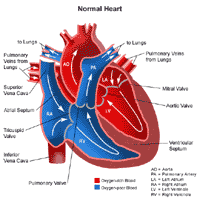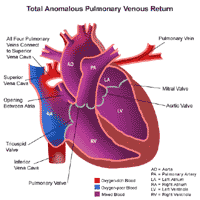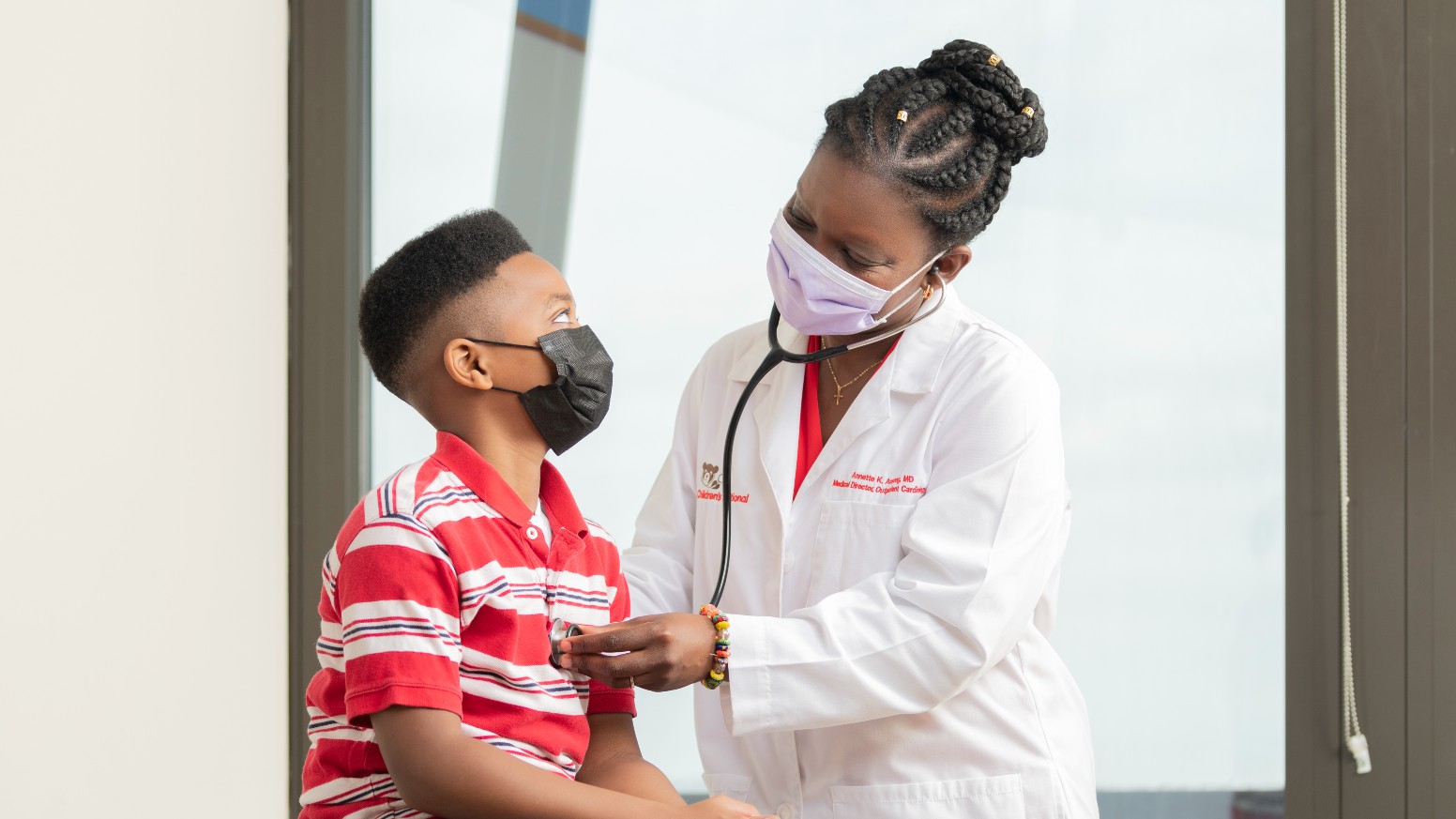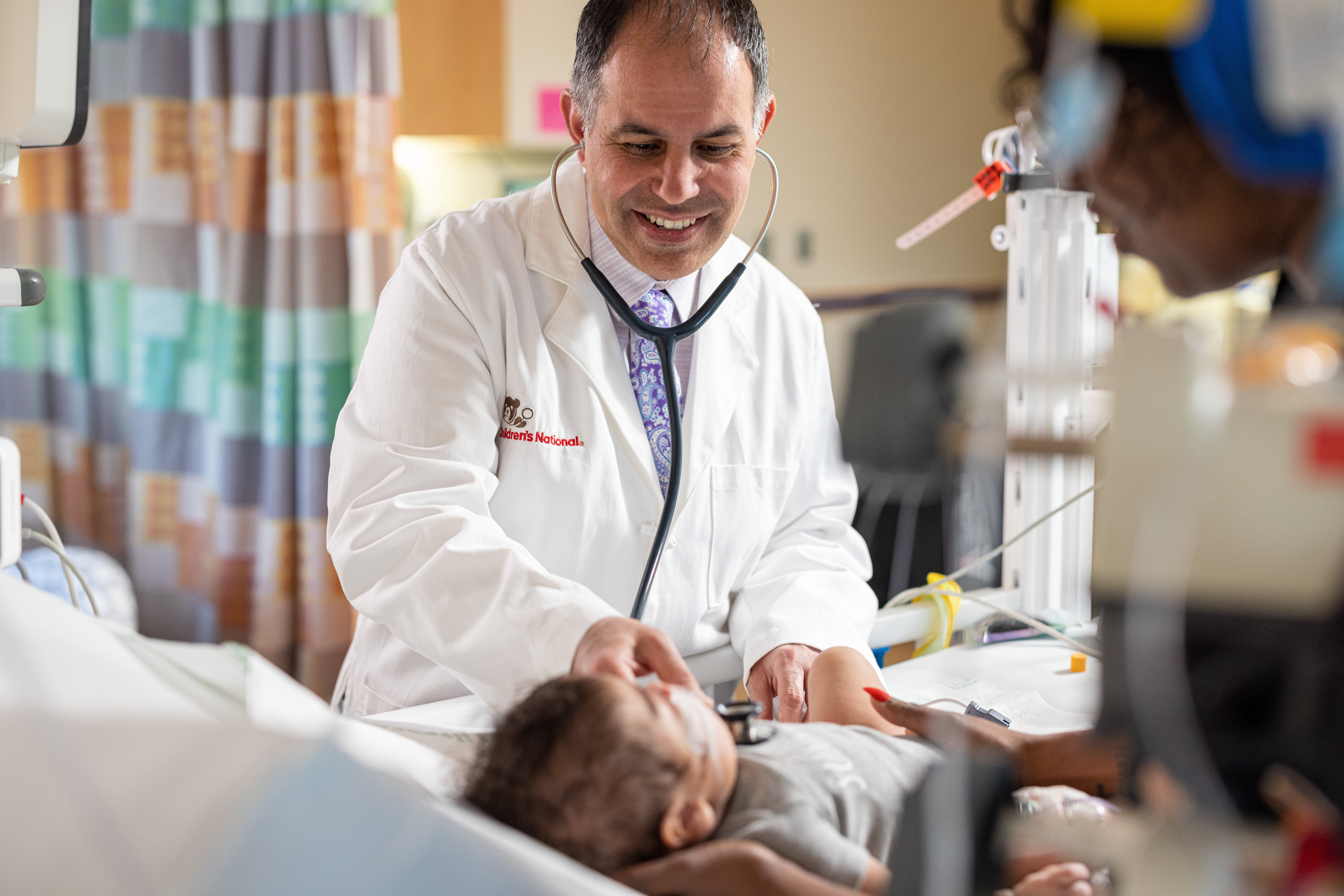Condition
Pediatric Total Anomalous Pulmonary Venous Return (TAPVR)
What is total anomalous pulmonary venous return?

Total anomalous pulmonary venous return (TAPVR) is a congenital (present at birth) heart defect. Due to abnormal development of the prenatal heart during the first eight weeks of pregnancy, the vessels that bring oxygen-rich (red) blood back to the heart from the lungs are improperly connected.
Normally, oxygen-poor (blue) blood returns to the right atrium from the body, travels to the right ventricle, then is pumped through the pulmonary artery into the lungs where it receives oxygen. Oxygen-rich (red) blood returns to the left atrium from the lungs through four pulmonary veins. It then passes into the left ventricle, and is pumped through the aorta out to the body.
In TAPVR, the four pulmonary veins are connected somewhere besides the left atrium. There are several possible places where the pulmonary veins can connect. The most common connection is to a blood vessel that brings oxygen-poor (blue) blood back to the right atrium, usually the superior vena cava.

In TAPVR, oxygen-rich (red) blood that should return to the left atrium, the left ventricle, the aorta and then the body, instead mixes with the oxygen-poor (blue) blood flowing into the right side of the heart. This situation by itself will not support life, because there is no way for oxygen-rich (red) blood to be delivered to the body.
Other heart defects are often associated with TAPVR and they actually help the infant with total anomalous pulmonary venous return to live until surgical intervention is possible:
-
An opening in the atrial septum will allow blood from one side to mix with blood from another, creating "purple" blood with an oxygen level somewhere in-between that of the oxygen-poor (blue) and the oxygen-rich (red) blood.
-
Patent ductus arteriosus will also allow mixing of oxygen-poor (blue) and oxygen-rich (red) blood through the connection between the aorta and pulmonary artery. The "purple" blood that results from this mixing is beneficial, providing at least a little oxygen to the body.
Total anomalous pulmonary venous return occurs equally in boys and in girls.
Frequently Asked Questions
Prevention and Risk Assessment
What causes total anomalous pulmonary venous return in children?
Why is TAPVR a concern for children?
Diagnosis
What are the symptoms of total anomalous pulmonary venous return in children?
How is transposition of the great arteries diagnosed in children?
Treatment
What is the treatment for TAPVR in children?
What should I expect for my child's post-operative care?
How can I care for my child at home following a TAPVR surgical repair?
What is the long-term outlook after TAPVR surgical repair in children?
Meet the Providers Who Treat Total Anomalous Pulmonary Venous Return (TAPVR)
Departments that Treat Total Anomalous Pulmonary Venous Return (TAPVR)

The Zickler Family Prenatal Pediatrics Institute
The Zickler Family Prenatal Pediatrics Institute at Children's National Hospital in Washington, D.C., provides specialized care for babies during pregnancy, delivery and after birth.

Pediatric Cardiac Surgery
Our pediatric heart surgery team performs twice the number of surgeries of any other hospital in the region, with some of the best outcomes in the nation.

Children's National Heart Center
Our expert pediatric heart team, including more than 40 subspecialties, offer advanced heart care and excellent outcomes for thousands of children every year.







